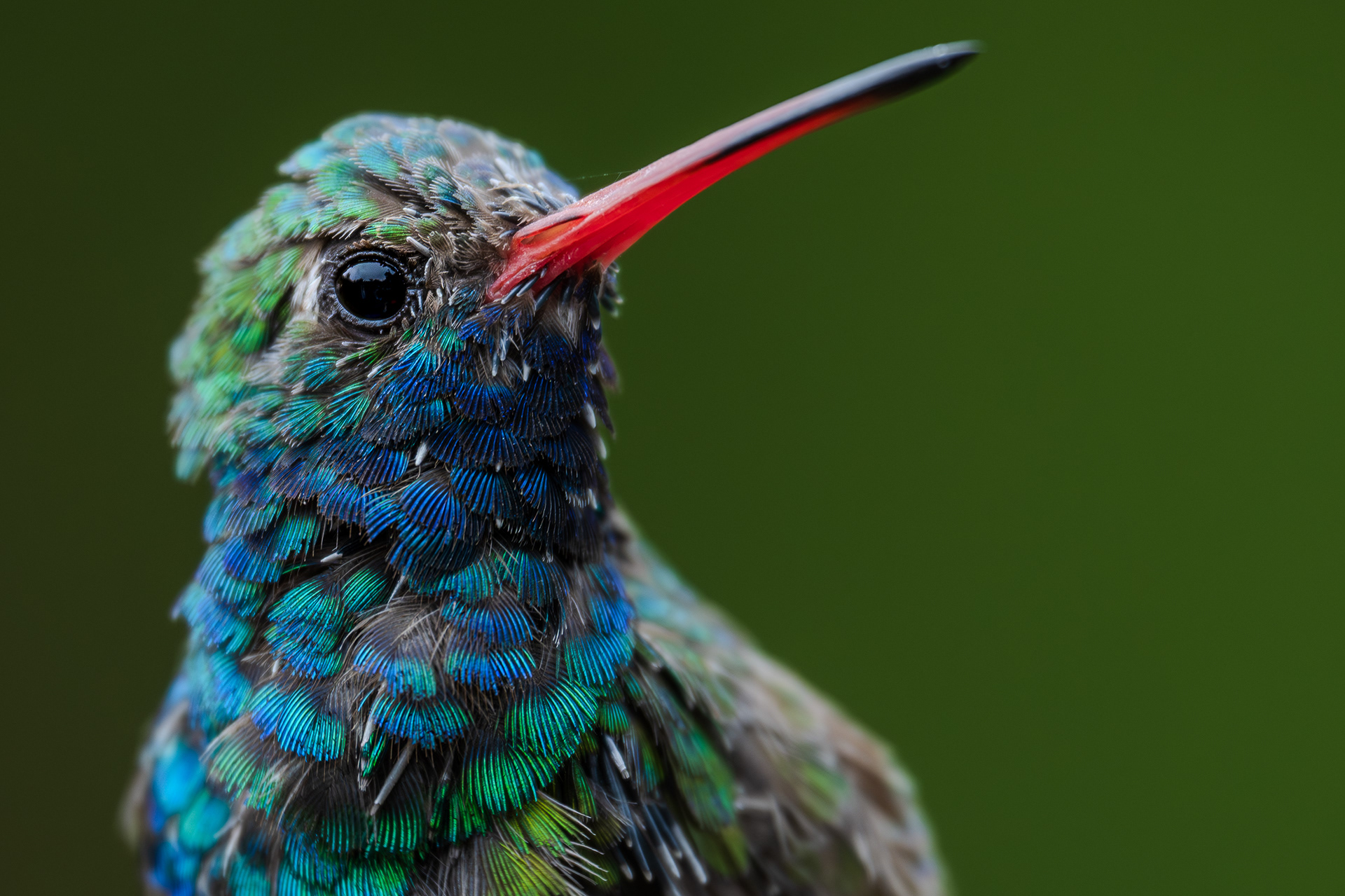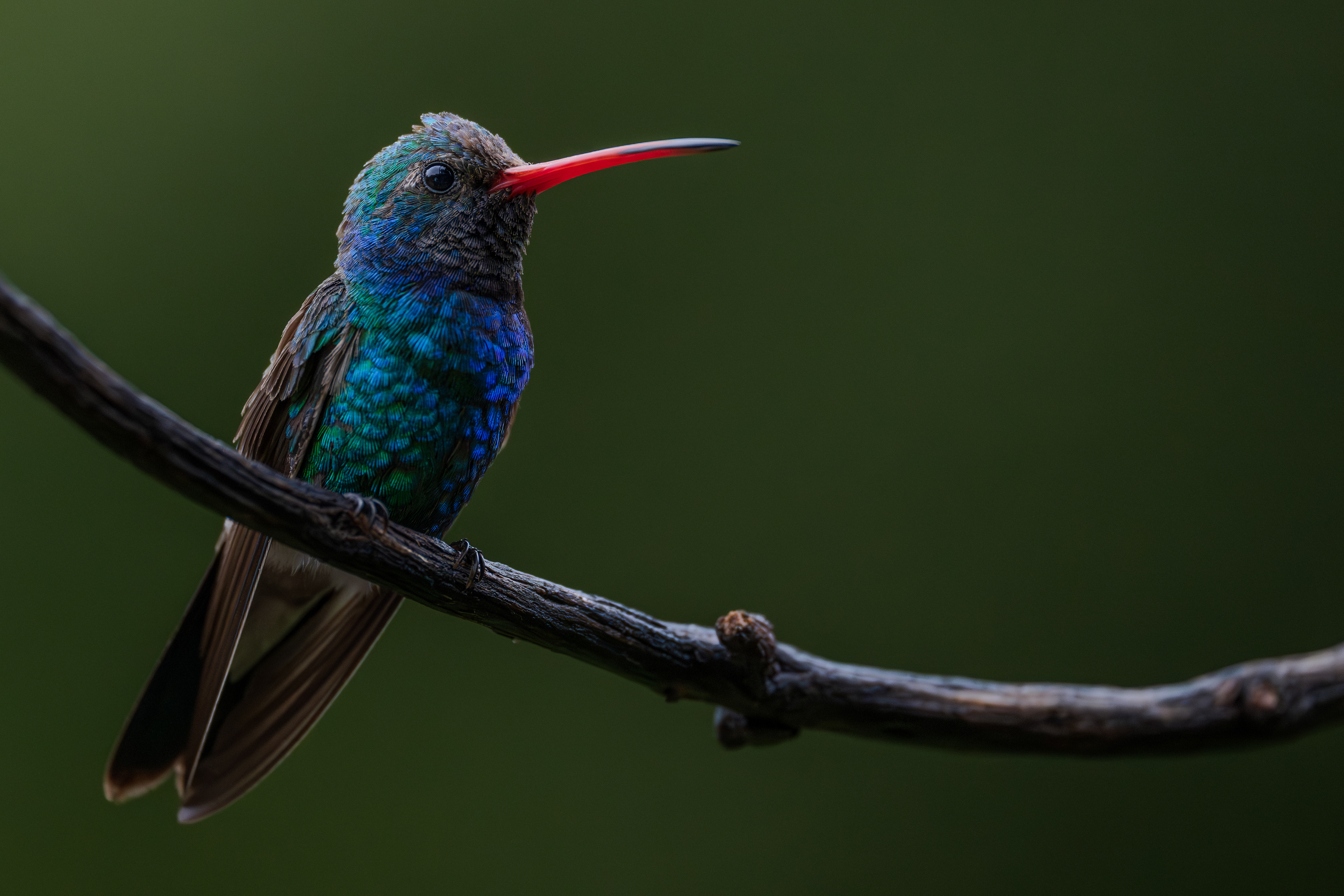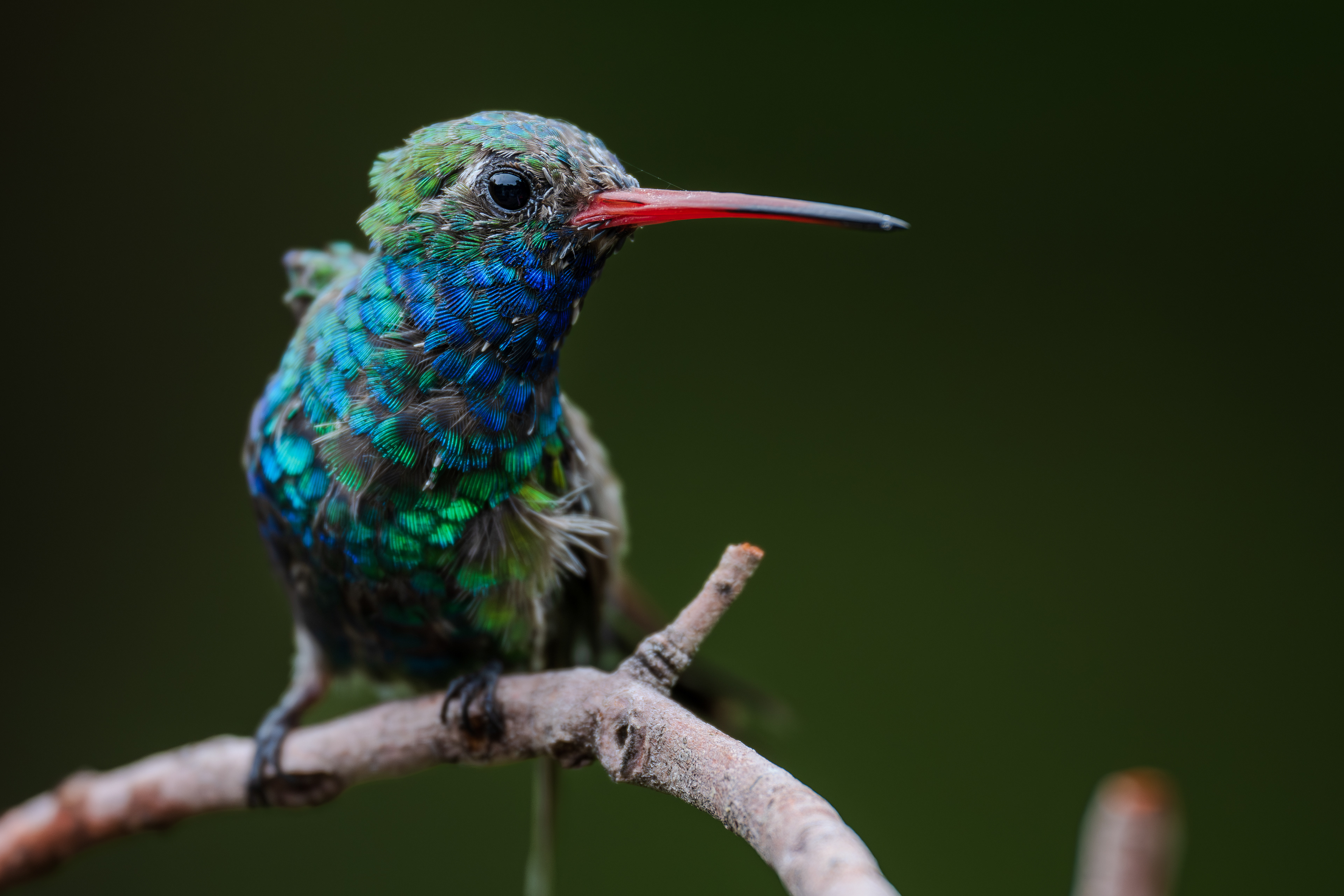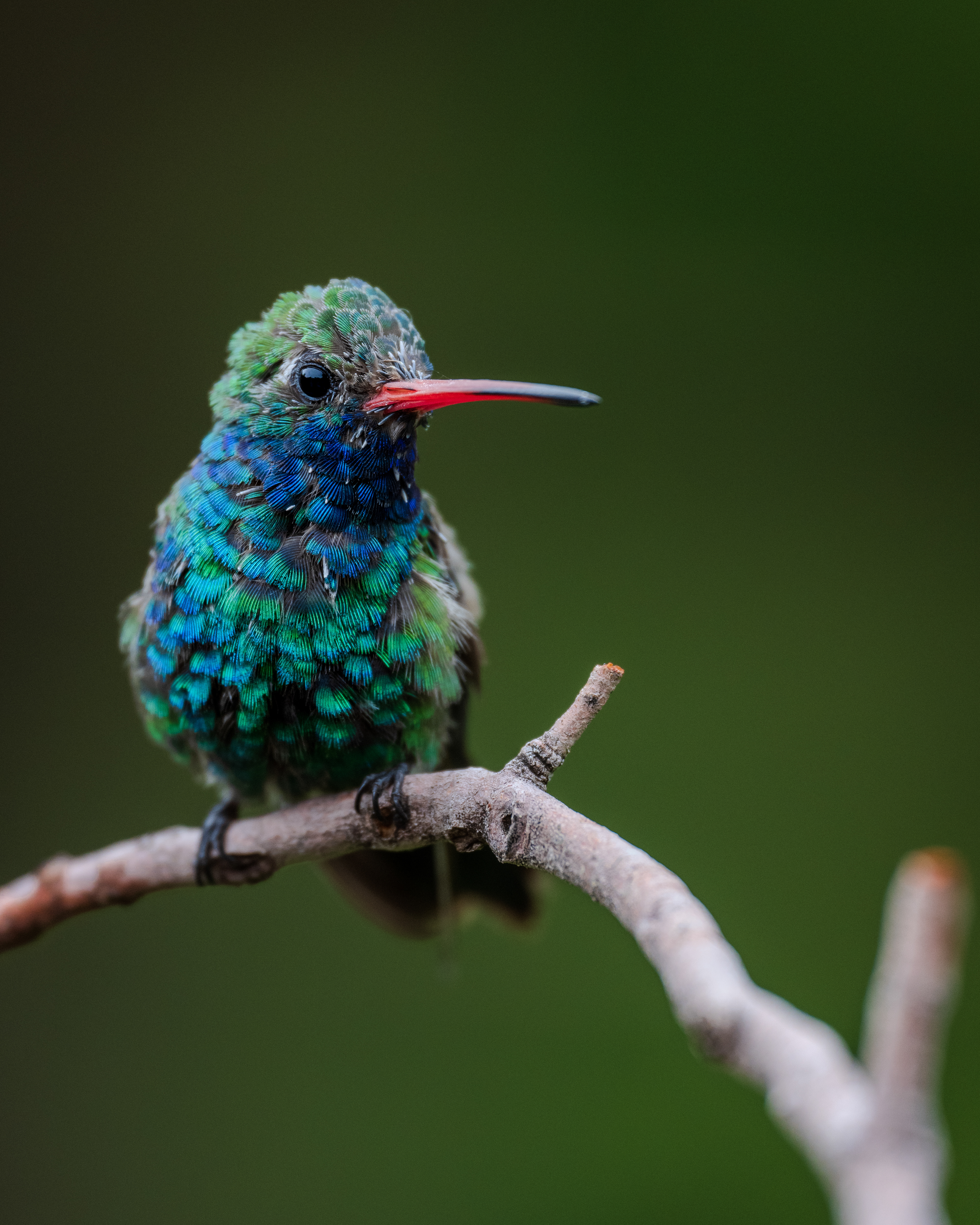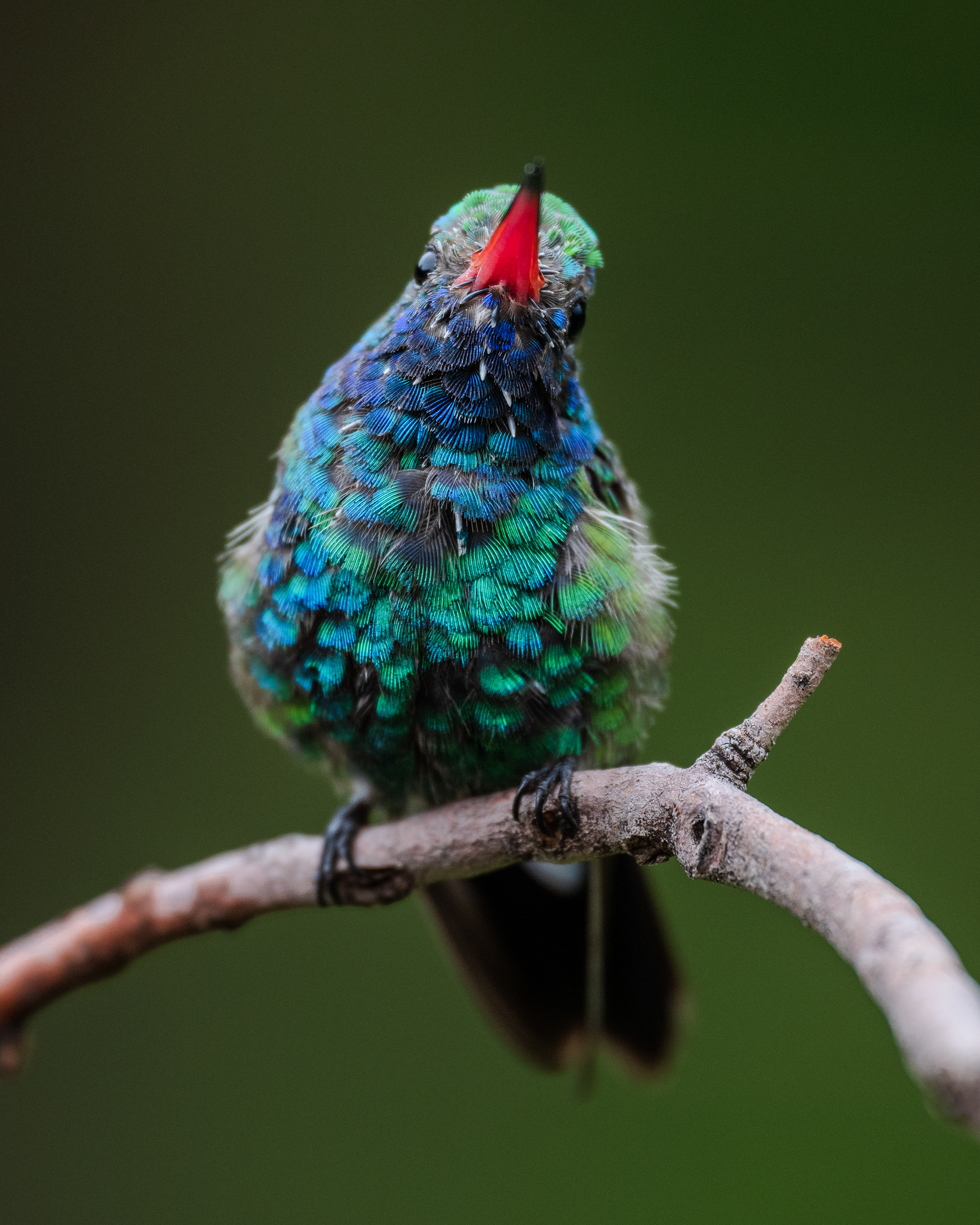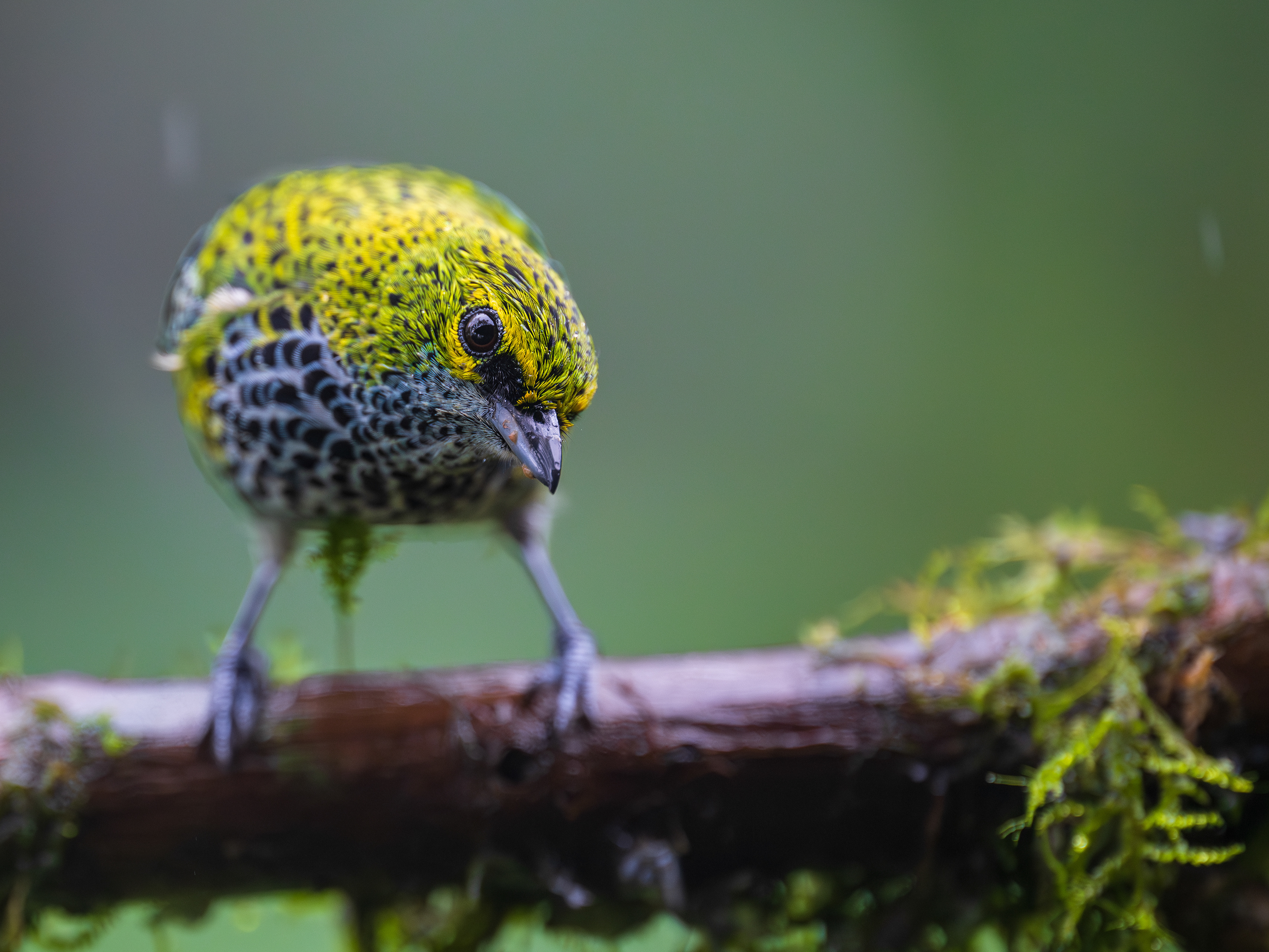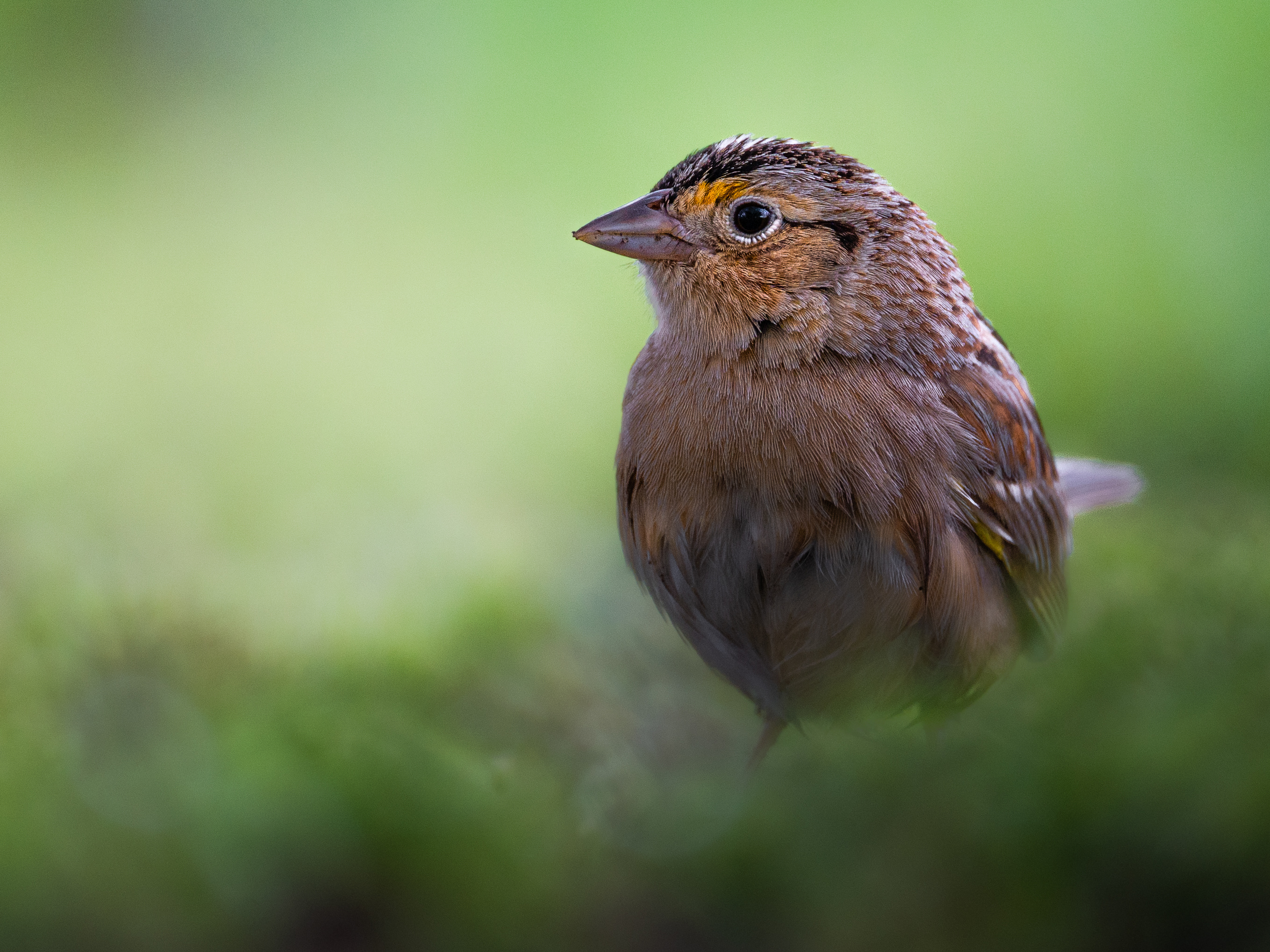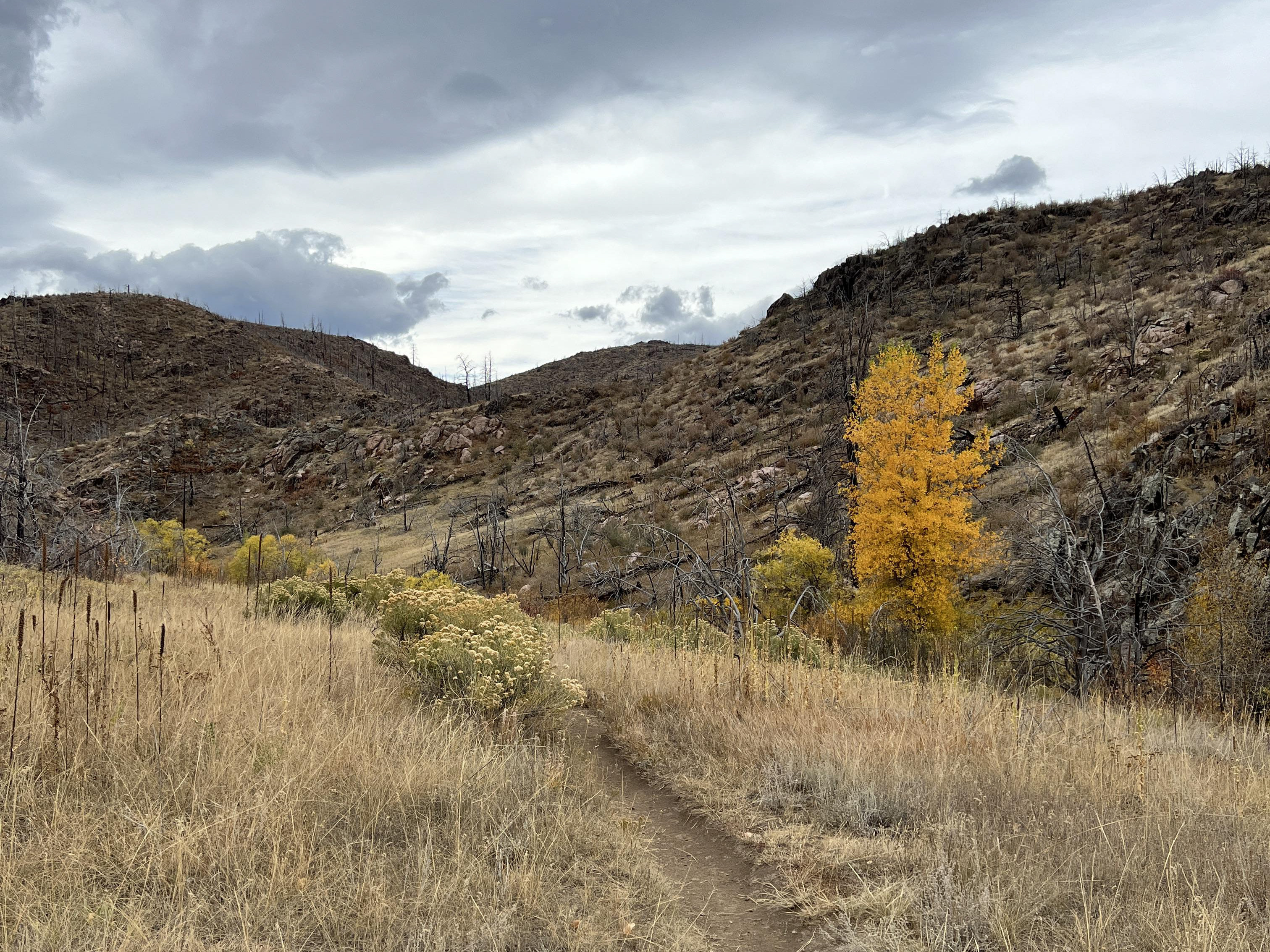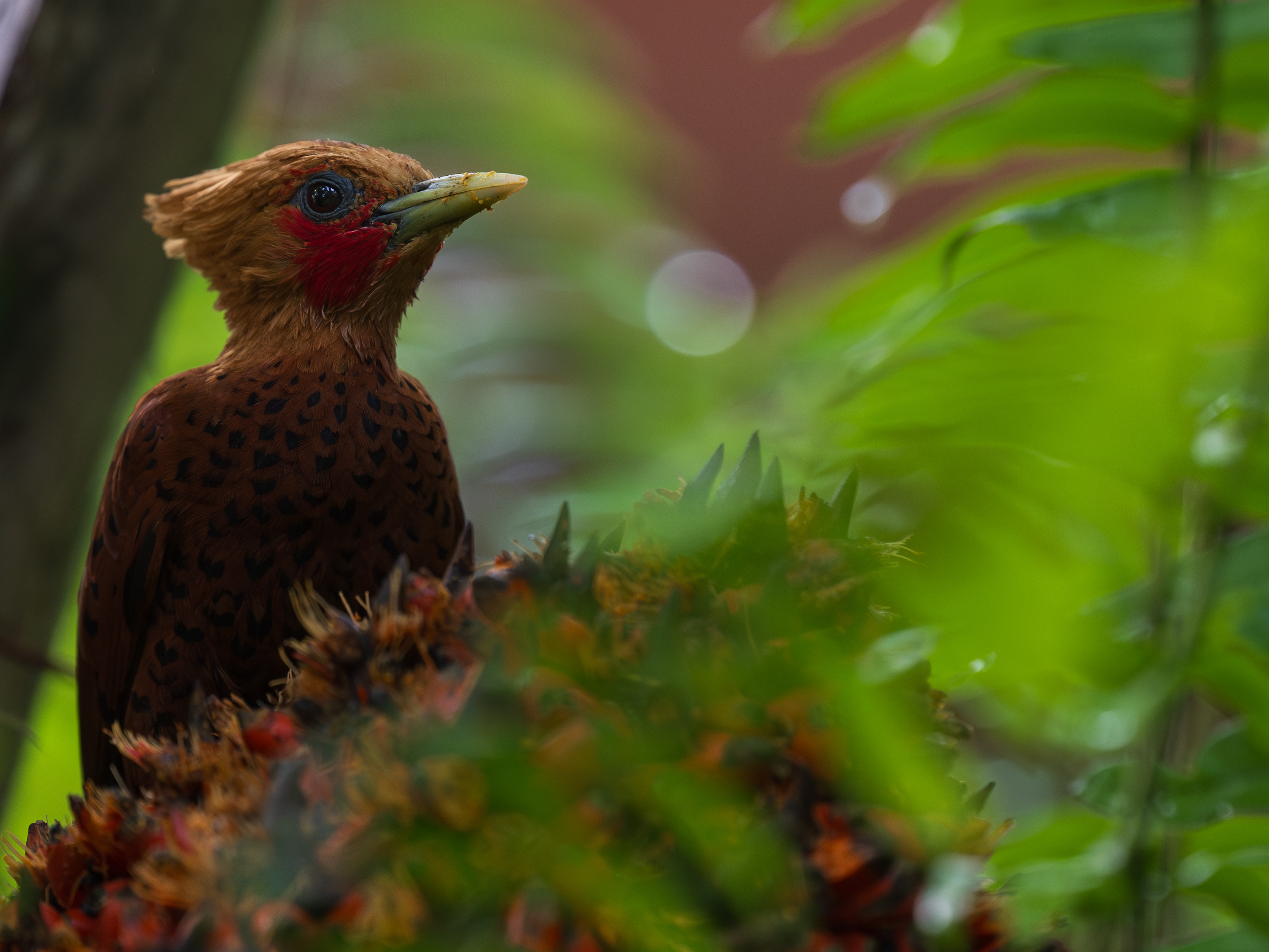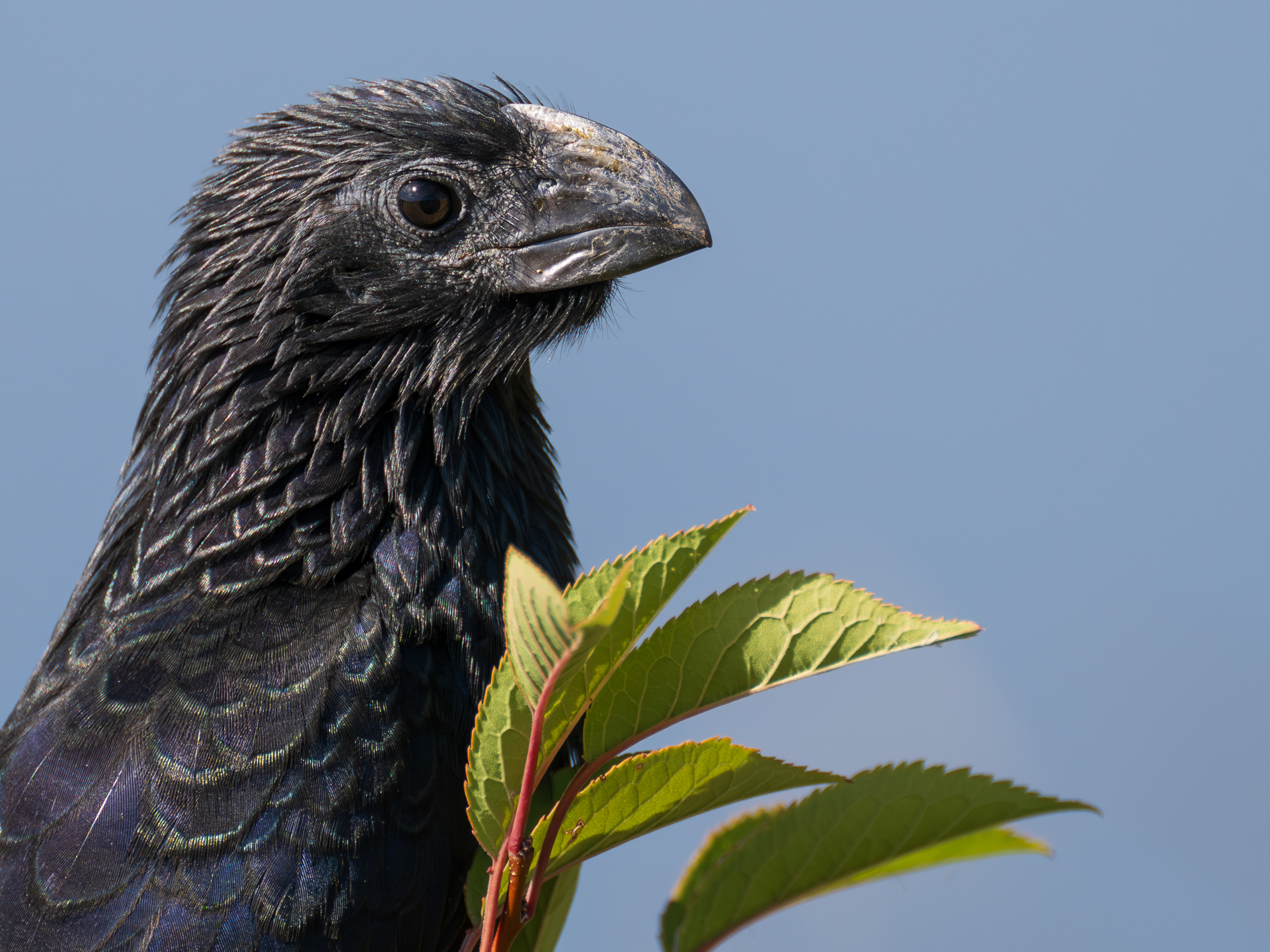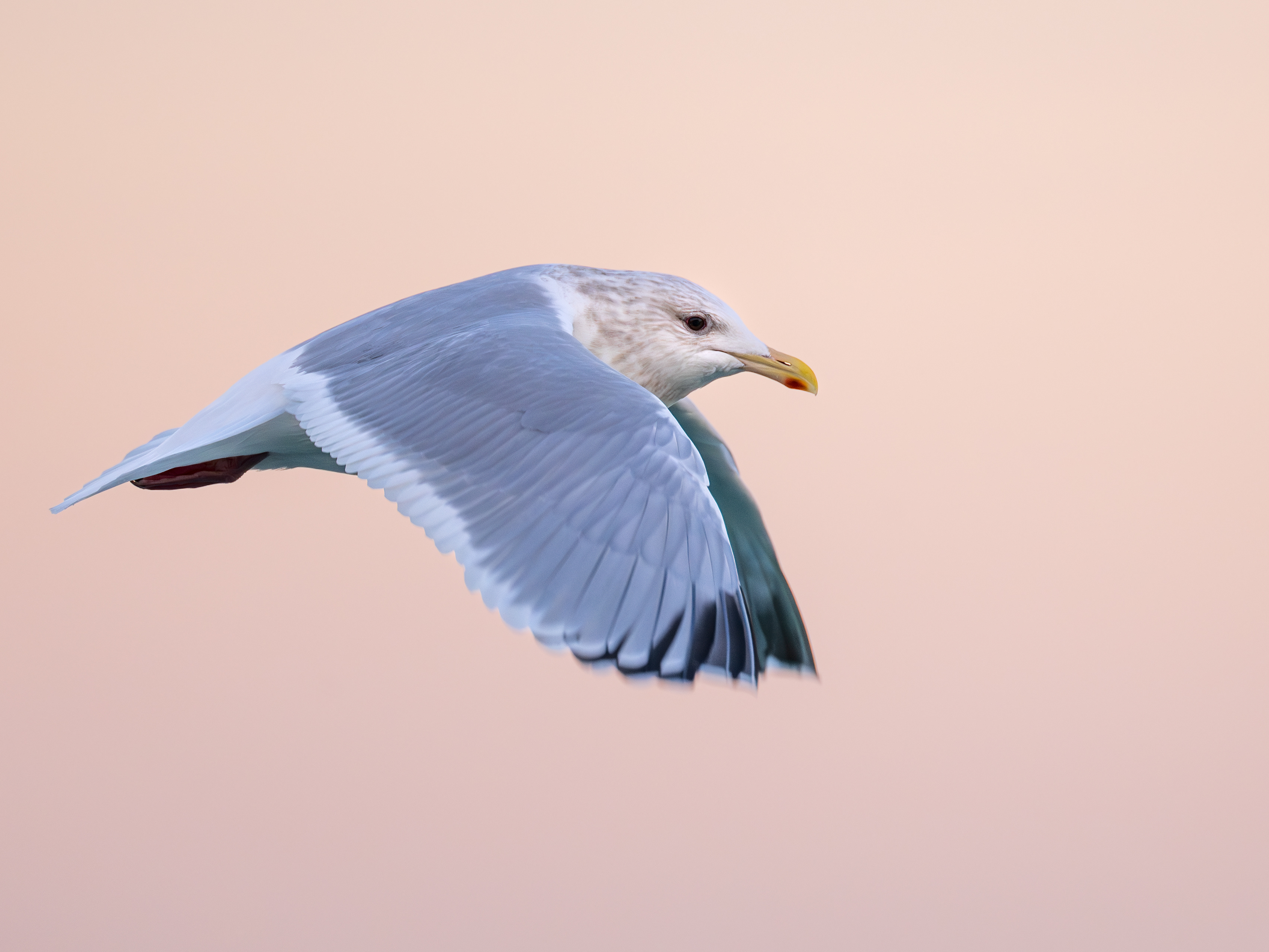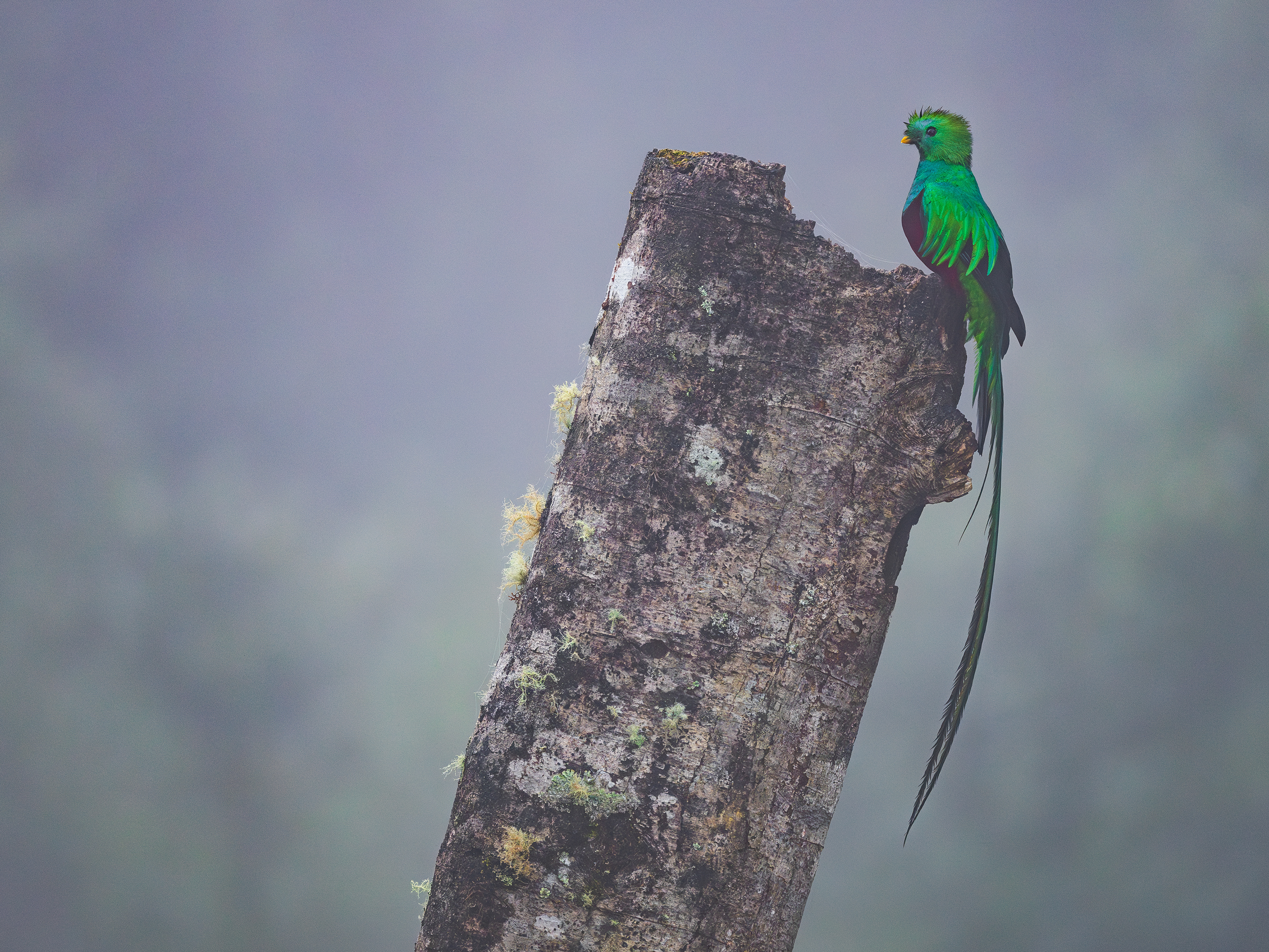This image is up there with some of my favorite photos I've ever taken, hands down.
The Tucson Audubon Society and Hunt's Photo and Video both has been gracious enough to invite me back and have me guide wildlife photo tours for the Southeast Arizona Birding festival a couple of times over the last few years. In 2022, my first year guiding for that festival, I got to use a Nikon Z7ii and 500 PF, which produced the best images I'd ever taken to that date. At the time, I had my trusty Nikon P1000 as my setup, so it's safe to say that I learned a lot about a lot regarding "real" cameras that week. Now, more than two years later, I've learned more than I could've imagined, and back at the festival this August, I put my skills to the test.
All of my tours this year were co-led with my friend and amazing wildlife photographer Christopher Smith. I met him first in 2022 at the Biggest Week in American Birding while guiding, and over the years he's been a massive inspiration to me. Half of our tours took place in Madera Canyon at the Santa Rita Lodge. Their hummingbird feeder setup is perfect for helping our tour attendees master fast action, and perfect for helping them become comfortable with their cameras. Personally if I'm doing strict bird guiding, not photography focused, I will not use my camera before I make sure everyone in the group has been satisfied with their looks of the birds, but with the photo specific tours, I'm using my camera all the time. Showing my images as I take them while explaining my exposure choice and composition can help attendees become more confident with their own abilities, so a lot of the time when I'm not actively helping an attendee, I'm just shooting as I normally would.
On our first tour at the Santa Rita Lodge, it had just rained heavily in the canyon prior to us arriving, so there was a MASSIVE number of Broad-billed Hummingbirds swarming the feeders. Two different Berylline Hummingbirds were hanging out as well on some amazing perches, giving our group as good of an opportunity as possible to practice shooting with blown out foregrounds.
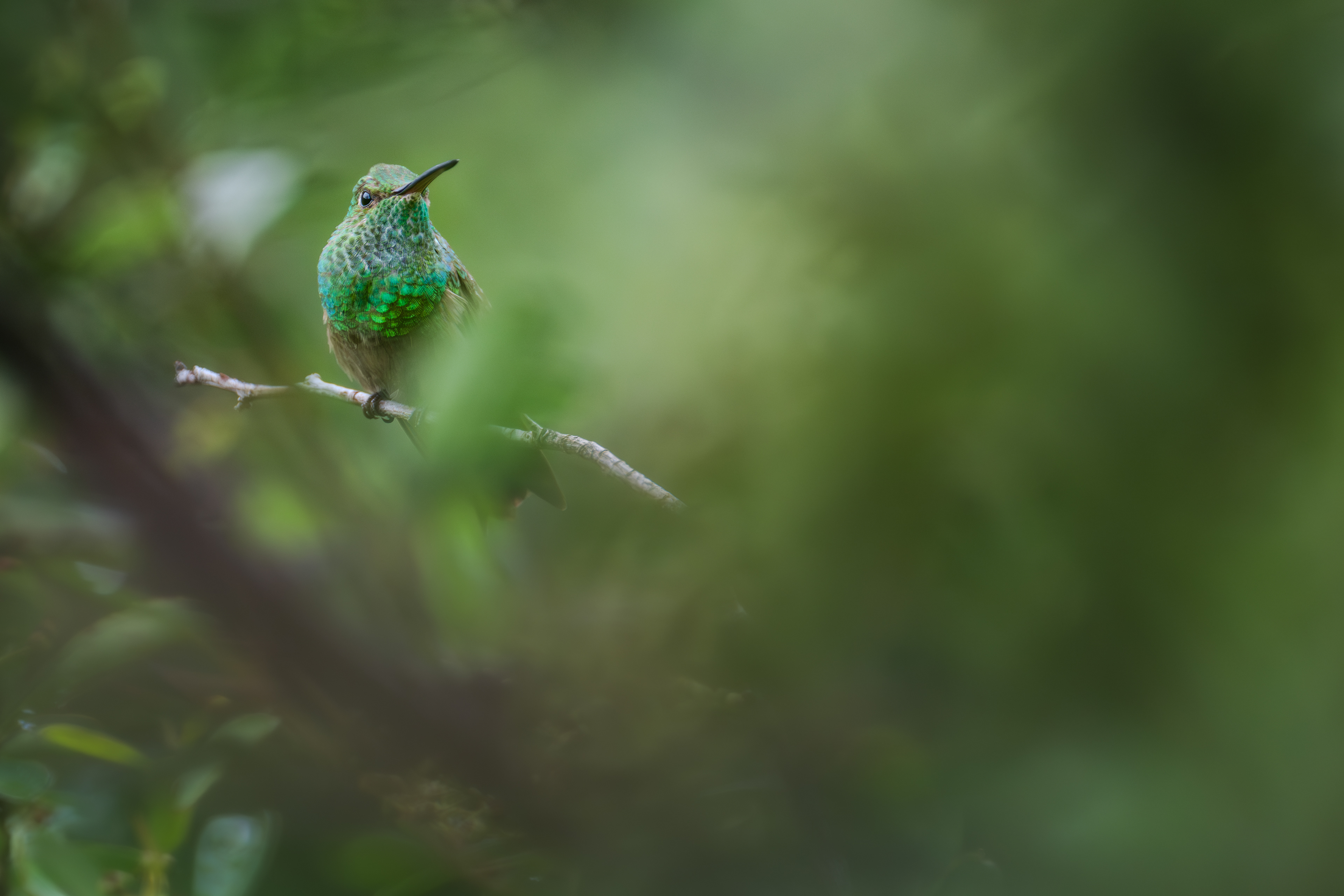
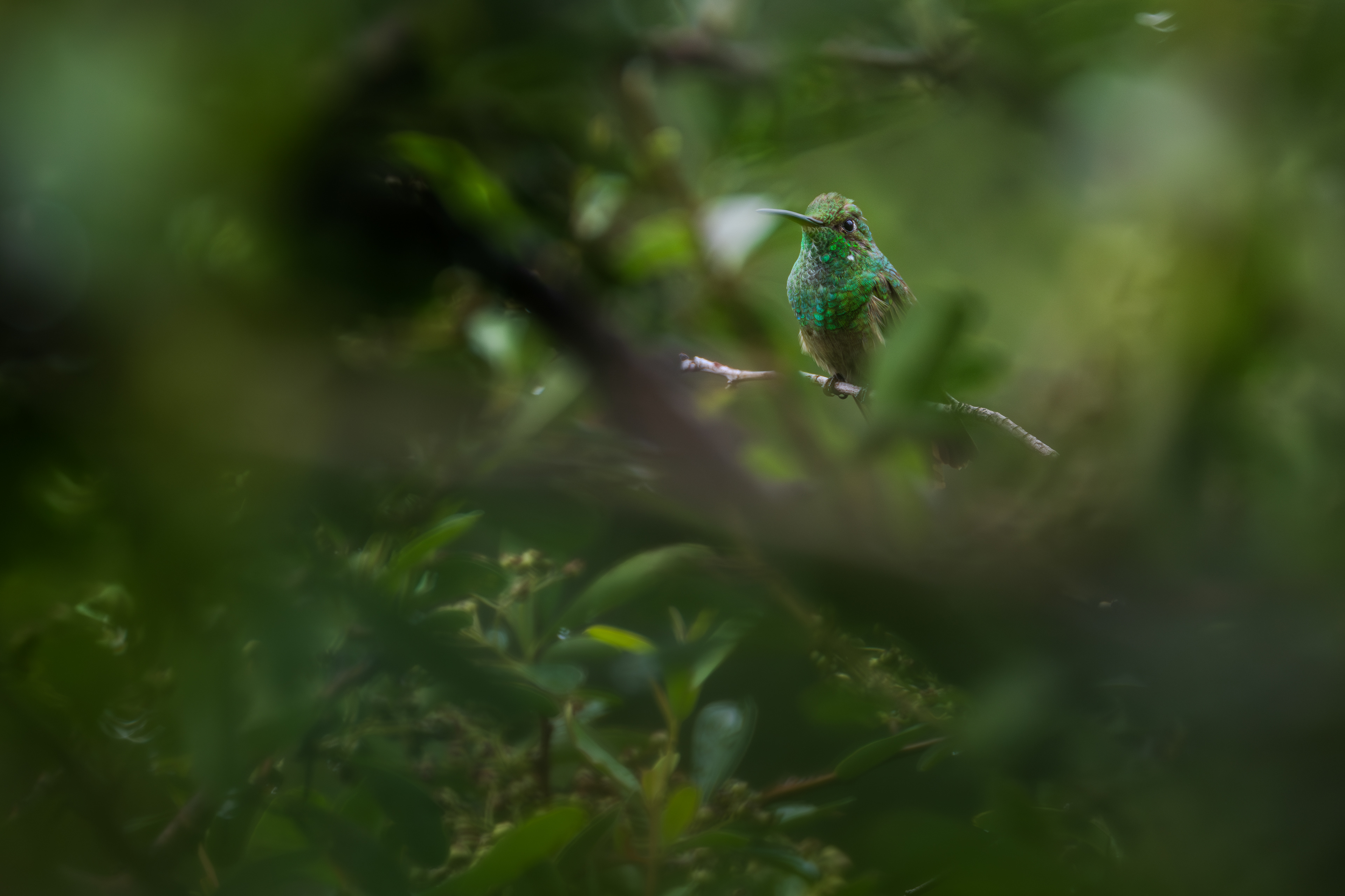
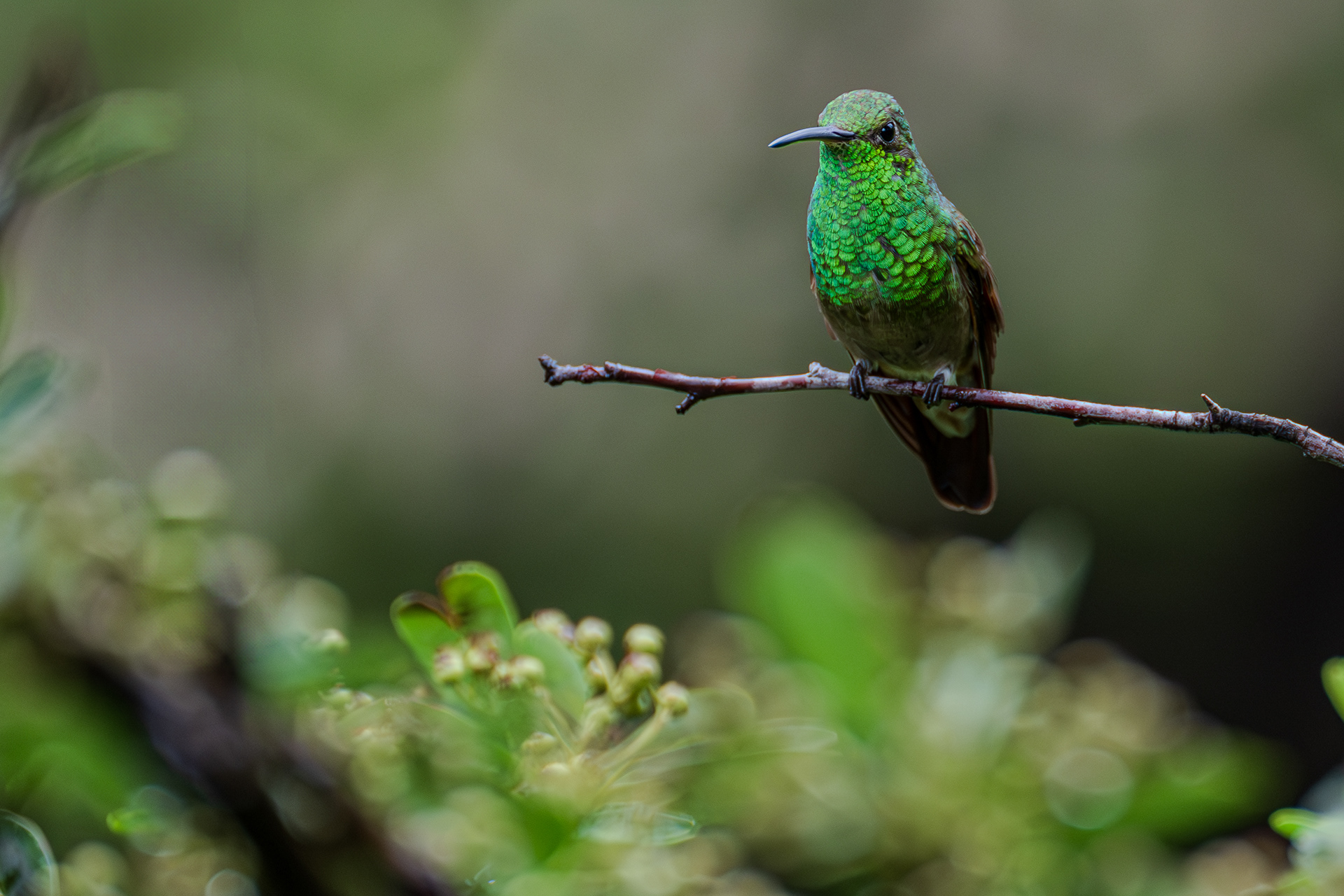
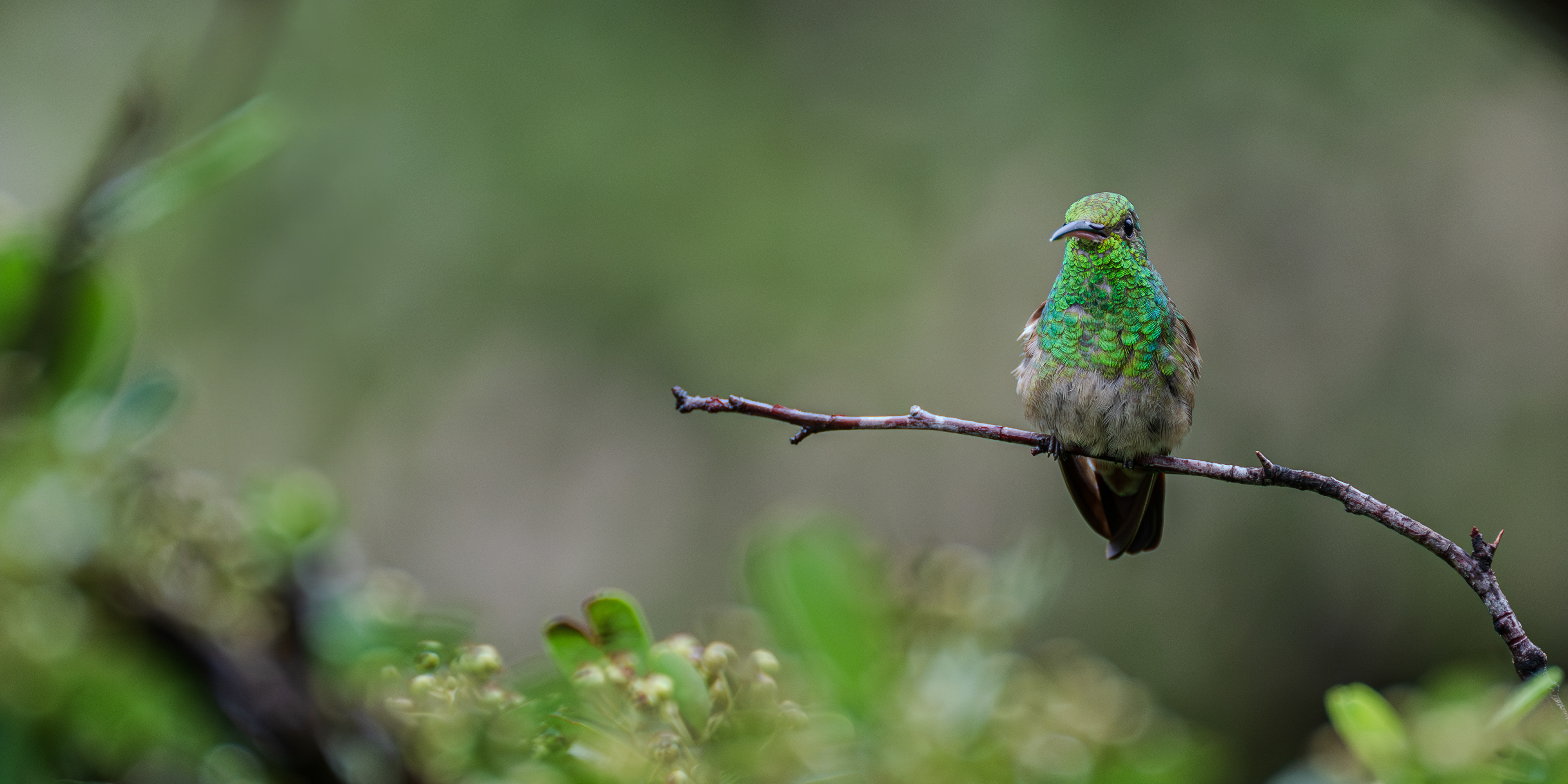

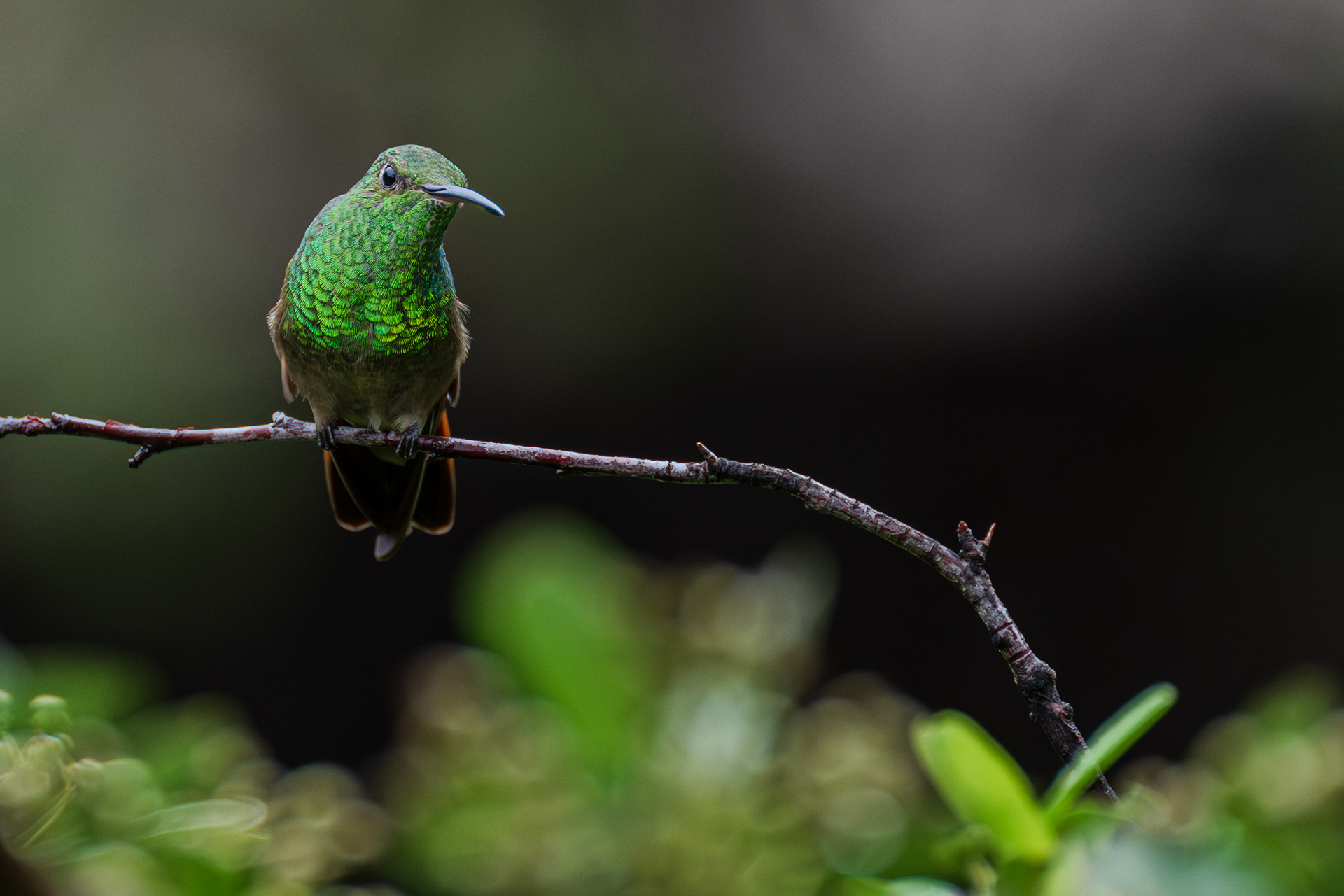
After the Berylline Hummingbirds vanished, we focused more on Broad-billed Hummingbirds. Because it was later in the evening and quite overcast, practicing shooting them in flight would've been futile on the ISO portion of shooting, so we practiced patience and prediction. There were a few perches a couple of different individual male Broad-billed Hummers were frequenting and spending multiple minutes sitting on, so that was our target. Now, the convenience of a feeder setup like this is that the birds are fairly acquainted to humans being all up in their business, and just don't pay any mind to people watching and photographing them. That was good for me as my 100-400mm at 400mm can focus at a near-macro level of close (2.46 feet from the camera's sensor to be exact), it's my favorite part about the lens. The hummingbirds not caring at all, the minimum focus distance of my lens, and the fact that I can in-camera crop my sensor by a factor of 1.5x, my 400mm just turned into 600 effective millimeters able to focus at under two and a half feet. Just ridiculous...
This is a scenario where a tripod or even a monopod might've been nice to have, but I didn't think that far ahead. While sitting down on the closest bench I could to this one perch a gorgeous gem of a male Broad-billed Hummer kept returning to, I held my camera out at arm's length, pre-focused to the minimum focus distance, and boom. The little guy flew right in. I could hear the sound of the wings beating reverberate through my lens hood a little bit which was pretty cool. I was a little surprised when after a minute or so of being unsatisfied with what I was getting, I decided to move my camera away, change a couple of settings, and the hummer didn't fly away when I put my camera back up. I backed out of crop mode to go back to 400mm and utilize all 45.7 megapixels my camera has to offer, just to try to capture a little more of the bird as it was sitting. Now I was starting to get somewhere. I also found that with the dim cloudy light, underexposing the photos was bringing out the color a little more than evenly/overexposing.

Overexposed definitely did not look as good or as clean as underexposing.

Much better.
I was finding that underexposing was not only making the dazzling colors of the bird come out more, but it was also making them stand out more as the background got darker and darker. That being said, I did get quite a few images that were not so underexposed, which I'v shown below. I definitely was feeling pretty awesome about what I was getting, and I knew that there was going to have to be hardly anything to do to the photo in post back at the hotel. It really is nice to have a set of images you know are just so good coming straight out of camera that the most you'll have to do with editing is move a slider or two a couple clicks, then save to the hard drive.
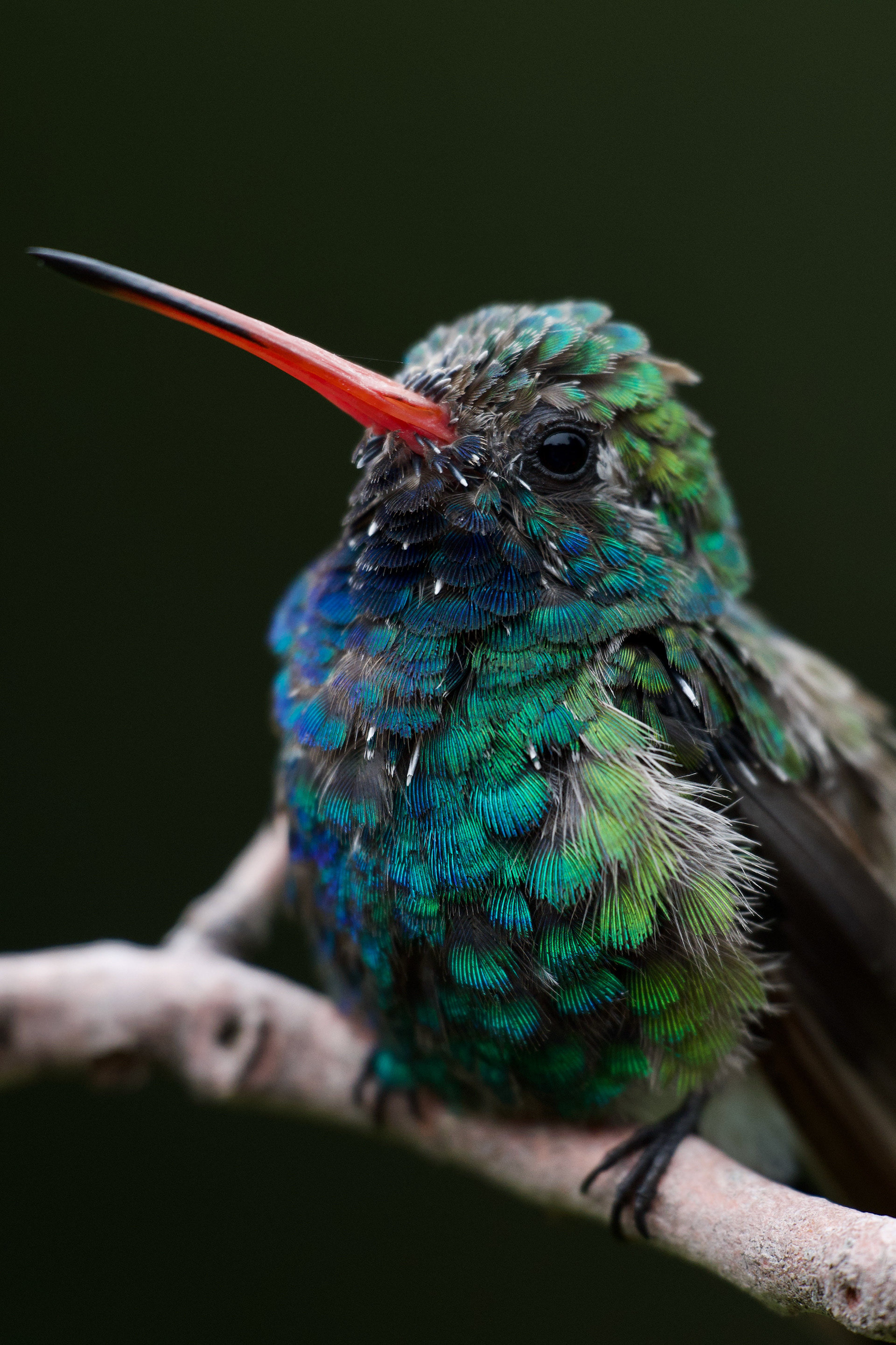
NEF Raw image.
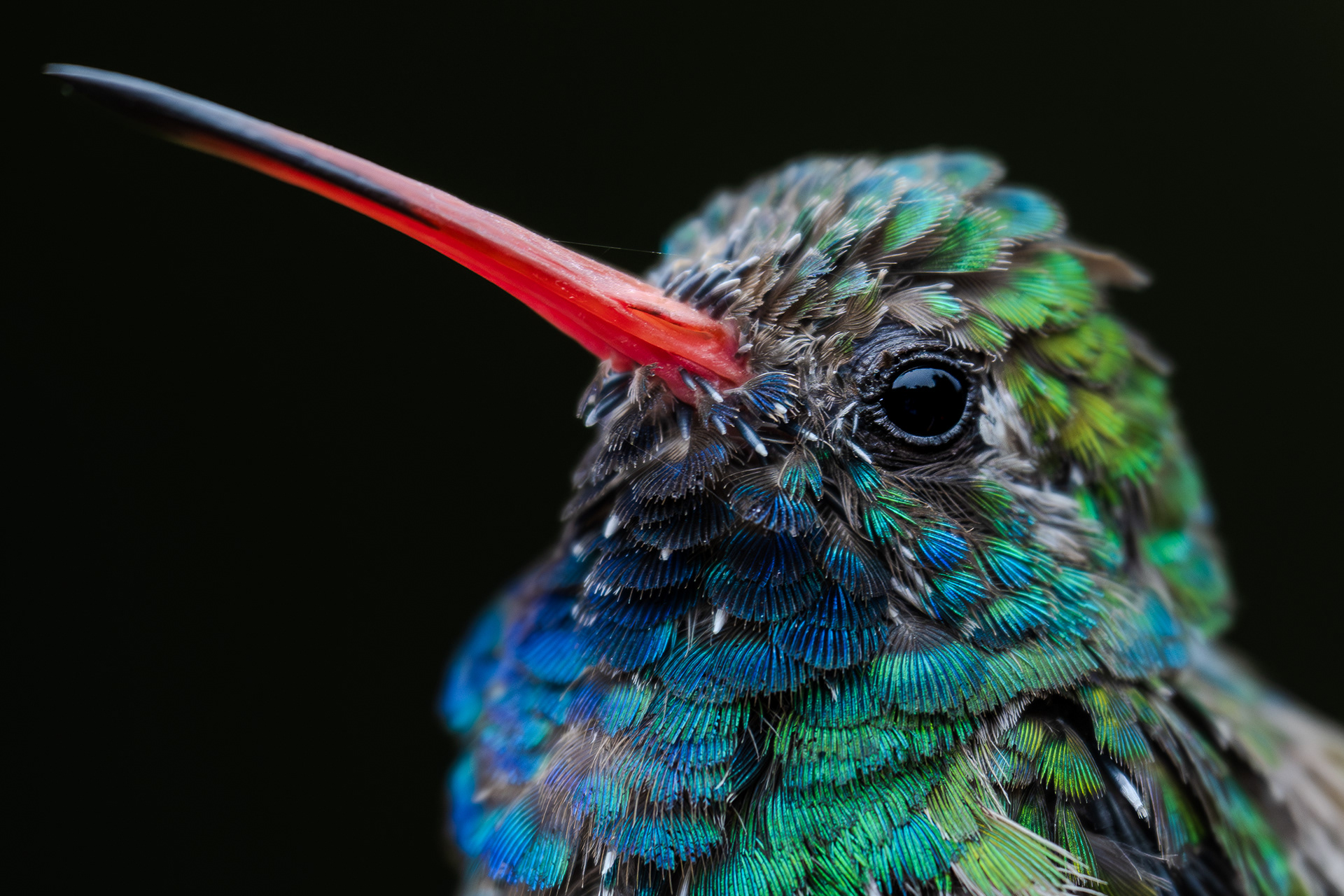
Edit. Luminance range mask for background subtracting the bird where I decreased exposure. Subject mask with a whites and shadows boost, as well as a couple clicks of blue/cyan/green saturation.
All in all, this was one of the better and most fun experiences I've had photographing one individual bird. It isn't too often that you get a chance to shoot subjects like this, so I soaked up every second of it, and I also think I did pretty ok with capturing the fine details.
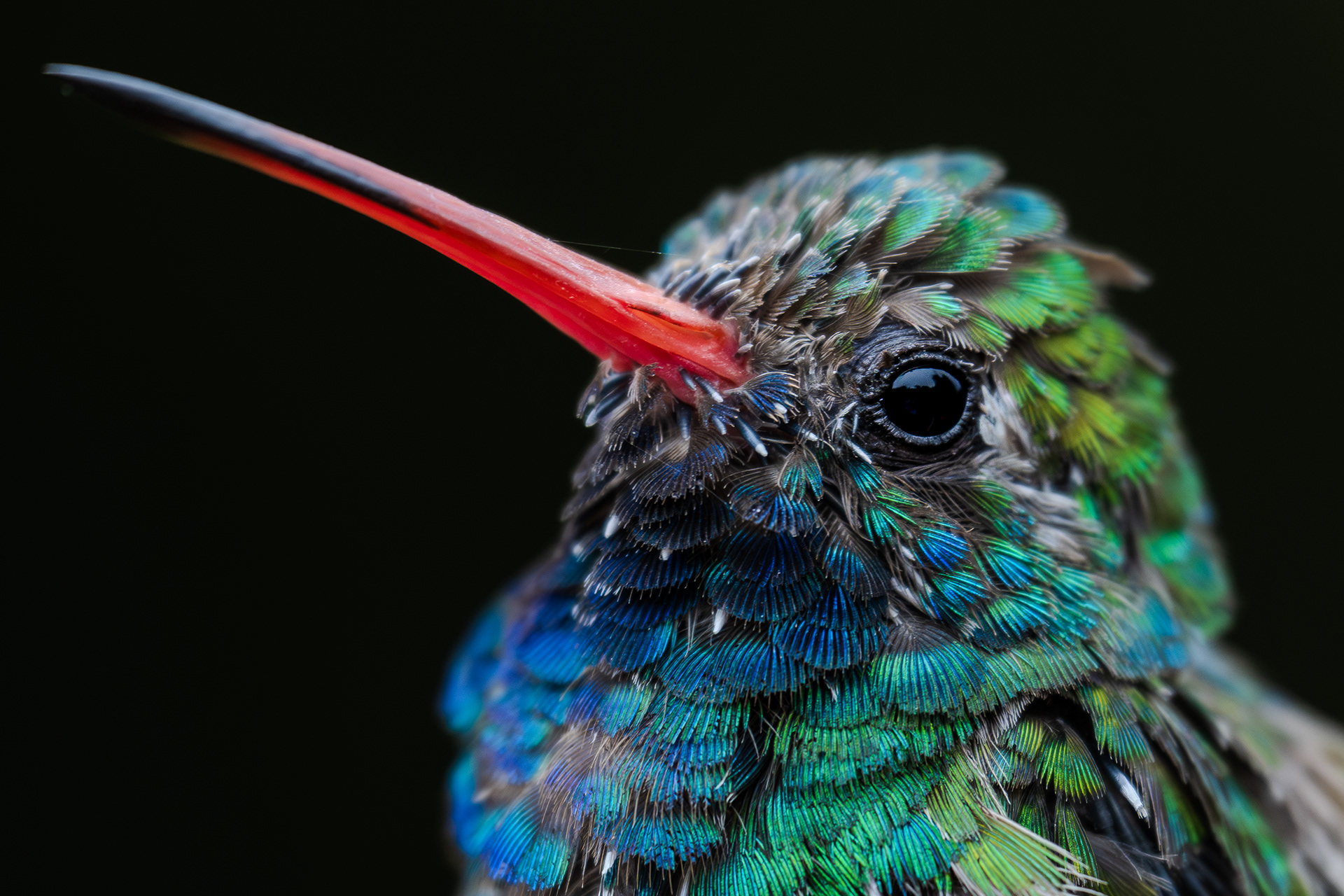

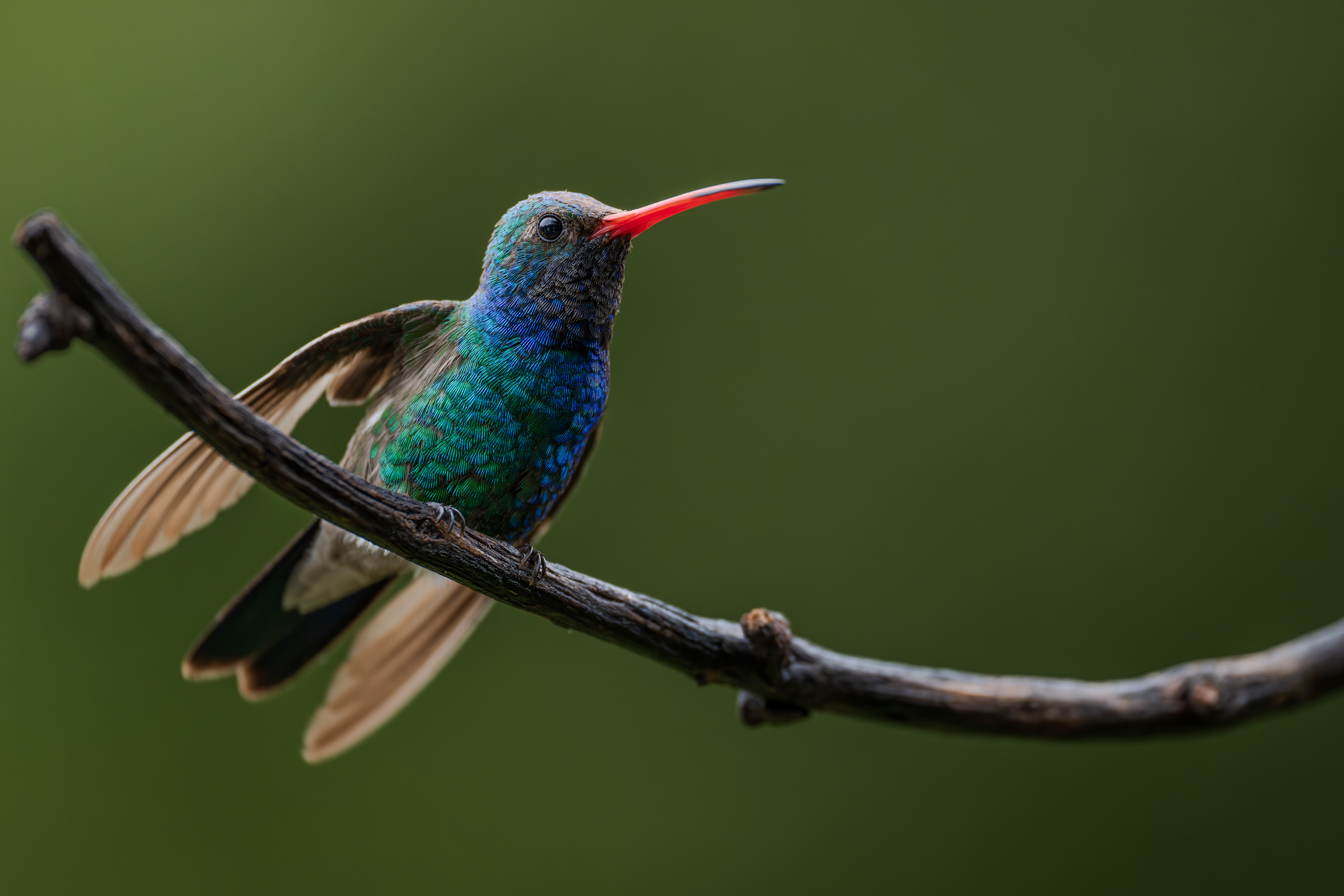

A really awesome detail of the bird's side.
